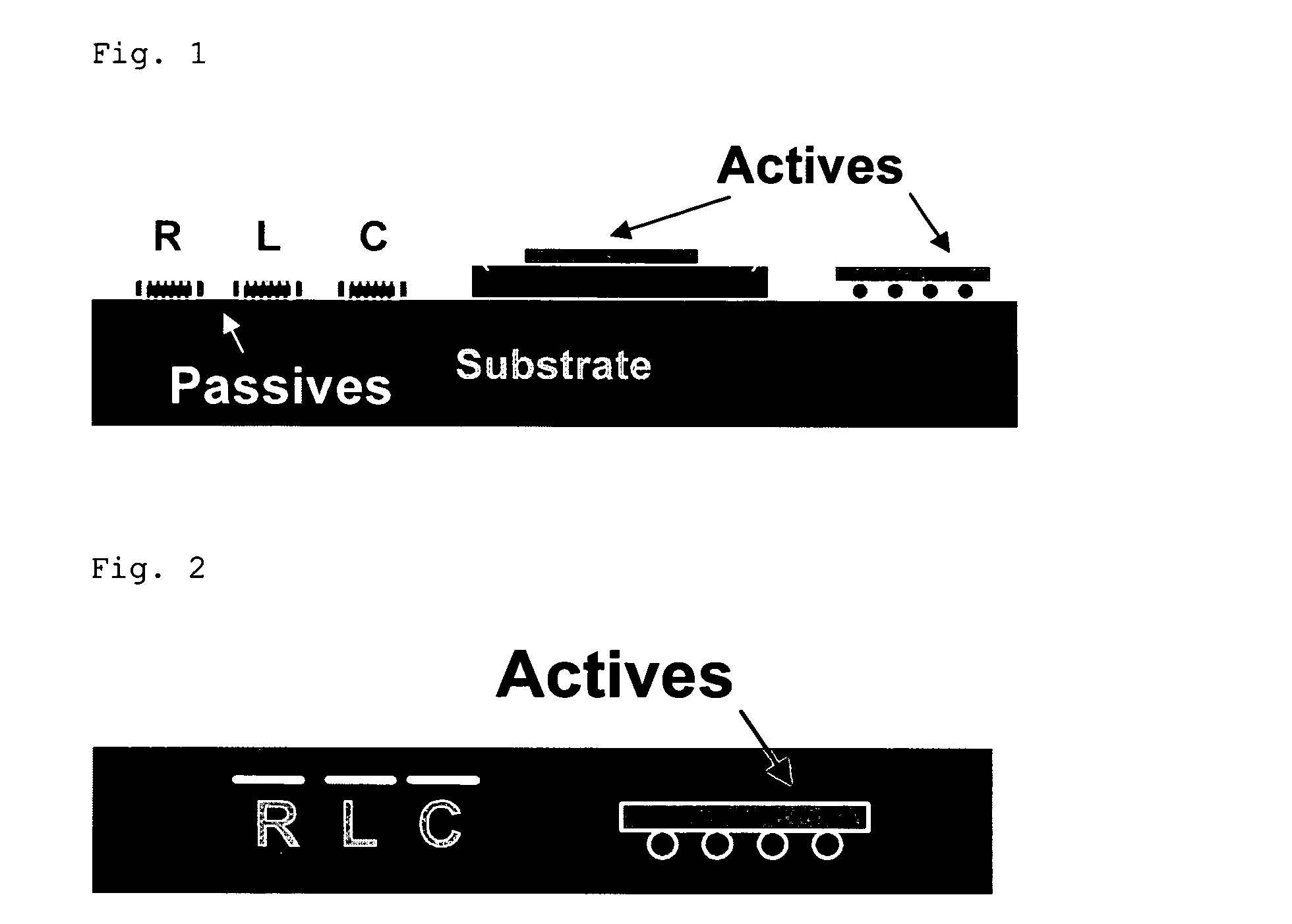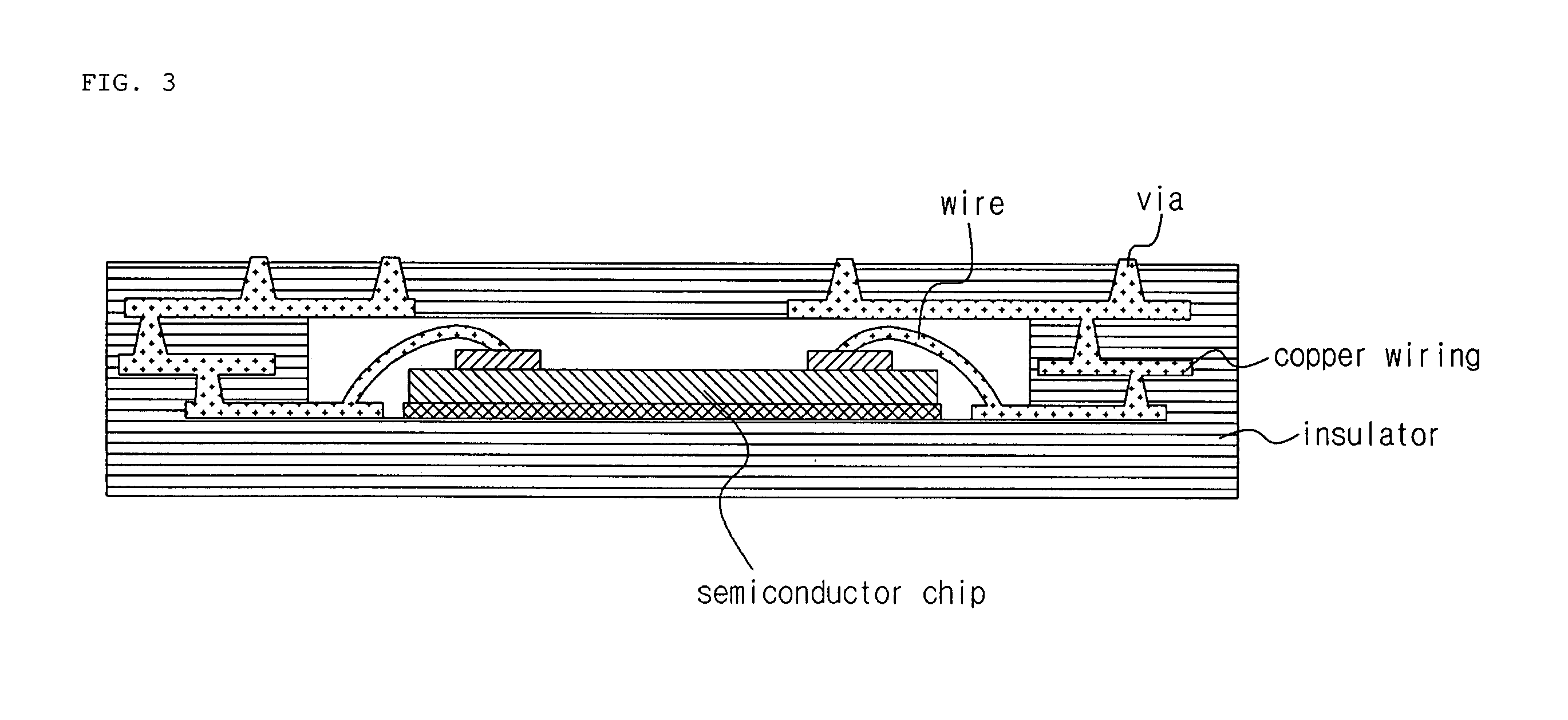Fabrication method of an organic substrate having embedded active-chips
a technology of organic substrates and substrates, which is applied in the direction of printed circuits, semiconductor devices, semiconductor/solid-state device details, etc., can solve the problems of difficult to embed ic chips in substrates, difficult to implement light, slim, short and small structures, and difficult to implement i/os in chips, etc., to achieve enhanced package reliability and higher information capacity
- Summary
- Abstract
- Description
- Claims
- Application Information
AI Technical Summary
Benefits of technology
Problems solved by technology
Method used
Image
Examples
Embodiment Construction
[0029]Hereinafter, the fabrication method of an organic substrate having embedded active-chips of the present invention will be described in detail with reference to the accompanying drawings. The following drawings are provided, by way of example, to sufficiently transfer the idea of the present invention to those skilled in the art. Therefore, the present invention is not limited to the following drawings and can be embodied in other forms. In addition, the same reference numerals are used to refer to the same parts throughout the specification.
[0030]At this time, unless the terms and scientific terminologies used in the specification are defined, they have meanings understood by those skilled in the art. The following description of known functions and configurations will be omitted so as not to obscure the subject of the present invention with unnecessary detail.
[0031]The present invention is a method that embed active-chips in a printed circuit board using a flip chip interconn...
PUM
 Login to View More
Login to View More Abstract
Description
Claims
Application Information
 Login to View More
Login to View More - R&D
- Intellectual Property
- Life Sciences
- Materials
- Tech Scout
- Unparalleled Data Quality
- Higher Quality Content
- 60% Fewer Hallucinations
Browse by: Latest US Patents, China's latest patents, Technical Efficacy Thesaurus, Application Domain, Technology Topic, Popular Technical Reports.
© 2025 PatSnap. All rights reserved.Legal|Privacy policy|Modern Slavery Act Transparency Statement|Sitemap|About US| Contact US: help@patsnap.com



